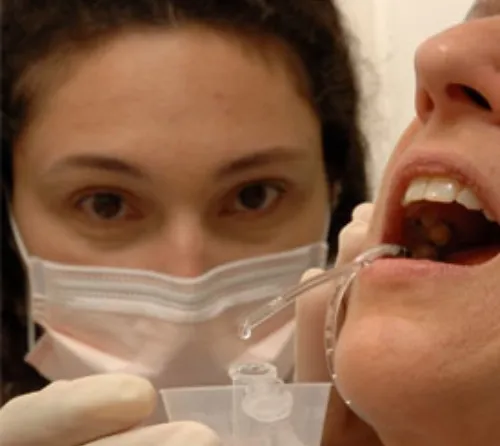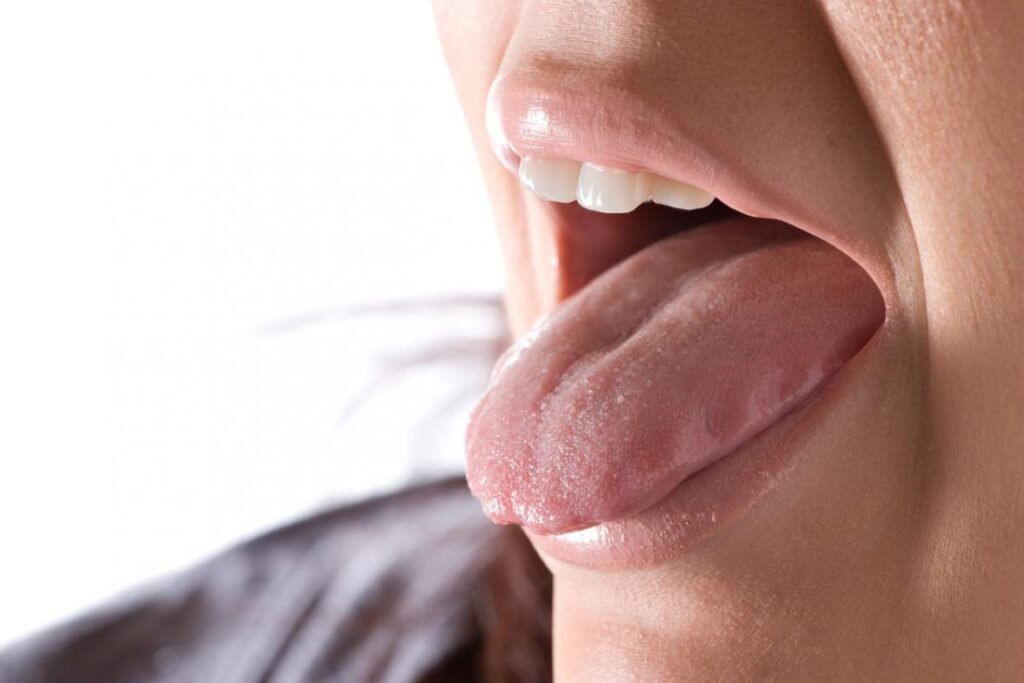Early Diagnosis
There is a combination of simple tests and screenings that make early diagnosis easy. And early cancer diagnosis is key to better prognosis
Know Your Cancer
Early diagnosis of cancer often provides the best chances of cure. Being aware of the symptoms, self-examination, physical examination, and regular screenings can drop the cancer death drastically.
Saliva – A Very Important Secretion
Symptoms Related To The Deficiency Of Salivary Secretions
10 Facts About Cancer
- More than 70% of childhood cancer is now curable with modern therapy.
- Most cases of skin cancer can be detected by being vigilant about changes on the skin.
- Most cases of pancreatic cancer are diagnosed too late with 80% of pancreatic cancer patients having a terminal disease.
- A white pupil in a color photograph can be a sign of Retinoblastoma.
- Mammography is the best early-detection tool to diagnose breast cancer.
- Biomarkers and liquid biopsy tests are effective cancer detection tests.
- Regular screening can often find colorectal cancer early.
- Blood test can detect 50 different types of cancers.
- Self-examination for breast cancer is one of the most popular awareness drives.
- The introduction of Pap smear Tests has resulted in a significant decline in cervical cancer incidence and mortality.
10 Facts About Cancer
FACT: 1
More than 70% of childhood cancer is now curable with modern therapy.
FACT: 2
Most cases of skin cancer can be detected by being vigilant about changes on the skin.
FACT: 3
Regular screening can often find colorectal cancer earl
FACT: 4
A white pupil in a color photograph can be a sign of Retinoblastoma.
FACT: 5
Mammography is the best early-detection tool to diagnose breast cancer.
FACT: 6
Biomarkers and liquid biopsy tests are effective cancer detection tests.
FACT: 7
Most cases of pancreatic cancer are diagnosed too late with 80% of pancreatic cancer patients having a terminal disease.
FACT: 8
Blood test can detect 50 different types of cancers.
FACT: 9
Self-examination for breast cancer is one of the most popular awareness drives.
FACT: 10
The introduction of Pap smear Tests has resulted in a significant decline in cervical cancer incidence and mortality.
The American Cancer Society uses the word C-A-U-T-I-O-N to recognize the seven early signs of cancer. Different cancer types have different kinds of signs and symptoms.
Different types of cancer have different kinds of signs and symptoms. These are also dependent on its location, its size and its extent of effect on organs and tissues. If a cancer has spread (metastasized), signs or symptoms may appear in different parts of the body.
Sometimes, the symptoms are noticeable. At other times, the cancer starts in places where it won’t cause any signs or symptoms until it has grown quite large. Sometimes, cancer cells cause symptoms that are not usually linked to cancer! Talk about a master of disguise.
C – Change in bowel or bladder habits
A – Asore that does not heal
U – Unusual bleeding or discharge
T – Thickening or lump in the breast, testicles, or elsewhere
I – Indigestion or difficulty swallowing
O – Obvious change in the size, color, shape, or thickness of a wart, mole, or >mouth sore
N – Nagging cough or hoarseness
SIGNS AND SYMPTOMS OF CERTAIN CANCERS
Along with the general symptoms, one should watch for certain other common signs and symptoms that could suggest cancer. There may be other causes for each of these cancers, but it’s important to see a doctor about them as soon as possible – especially if there’s no other cause you can identify, the problem lasts a long time, or it gets worse over time.
CHANGE IN BOWEL HABITS OR BLADDER FUNCTION
Long-term constipation, diarrhoea, or a change in the size of the stool may be a sign of colon cancer. Pain when passing urine, blood in the urine, or a change in bladder function (such as needing to pass urine more or less often than usual) could be related to bladder or prostate cancer. Report any changes in bladder or bowel function to a doctor.
SORES THAT DO NOT HEAL
Skin cancers may bleed and look like sores that don’t heal. A long-lasting sore in the mouth could be an oral cancer. This should be dealt with right away, especially in people who smoke, chew tobacco, or often drink alcohol. Sores on the penis or vagina may either be signs of infection or an early cancer, and should be seen by a health professional.
UNUSUAL BLEEDING OR DISCHARGE
Unusual bleeding can happen in early or advanced cancer. Coughing up blood may be a sign of lung cancer. Blood in the stool (which can look like very dark or black stool) could be a sign of colon or rectal cancer. Cancer of the cervixor the endometrium (lining of the uterus) can cause abnormal vaginal bleeding. Blood in the urine may be a sign of bladder or kidney cancer. A bloody discharge from the nipple may be a sign of breast cancer.
THICKENING OR LUMP IN THE BREAST OR OTHER PARTS OF THE BODY
Many cancers can be felt through the skin. These cancers occur mostly in the breast, testicle, lymph nodes (glands), and the soft tissues of the body. A lump or thickening may be an early or late sign of cancer and should be reported to a doctor, especially if you’ve just found it or notice it has grown in size. Keep in mind that some breast cancers show up as red or thickened skin rather than a lump.
INDIGESTION OR TROUBLE SWALLOWING
Indigestion or swallowing problems that don’t go away may be signs of cancer of the oesophagus(the swallowing tube that goes to the stomach), stomach, or pharynx(throat). But like most symptoms on this list, they are most often caused by something other than cancer.
OBVIOUS CHANGE IN THE SIZE, COLOR, SHAPE, OR THICKNESS OF A WART, MOLE, OR MOUTHSORE
Any wart, mole, or freckle that changes color, size, or shape, or that loses its sharp border should be seen by a doctor right away. Any other skin changes should be reported, too. A skin change may be a melanomawhich, if found early, can be treated successfully.
White patches inside the mouth and white spots on the tongue may be leukoplakia. Leukoplakia is a pre-cancerous area that’s caused by frequent irritation. It’s often caused by smoking or other tobacco use. People who smoke pipes or use oral or spit tobacco are at high risk for leukoplakia. If it’s not treated, leukoplakia can become mouth cancer. Any long-lasting mouth changes should be checked by a doctor or dentist right away.
OTHER GENERAL SYMPTOMS
The signs and symptoms listed above are the more common ones seen with cancer, but there are many others general symptoms that are not listed above. If you not lung ice any major changes in the way your body works or the way you feel – especially if it lasts for a long time or gets worse – please visit to doctors and let doctor know. If it has nothing to do with cancer, the doctor can find out more about what’s going on and, if needed, treat it. If it is cancer, you’ll give yourself the chance to have it treated early, when treatment works best.
We should know some of the general signs and symptoms of Cancers as well. But having any of these does not mean that you have cancer – many other things cause these signs and symptoms, too. If you have any of these symptoms and they last for a long time or get worse, please see a doctor to find out what’s going on.
UNEXPLAINED WEIGHT LOSS
Most people with cancer will lose weight at some point. When you lose weight for no known reason, it’s called an unexplained weight loss. An unexplained weight loss of 10 pounds (5kg ) or more may be the first sign of cancer. This happens most often with cancers of the pancreas, stomach, oesophagus (swallowing tube), or lung.
FEVER
Fever is very common with cancer, but it usually happens after the cancer has spread from where it started. Almost all people with cancer will have fever at some time, especially if the cancer or its treatment affects the immune system. (This can make it harder for the body to fight infection.) Less often, fever may be an early sign of cancer, such as blood cancers like leukaemia or lymphoma .
FATIGUE
Fatigue is extreme tiredness that doesn’t get better with rest. It may be an important symptom as the cancer grows. But it may happen early in some cancers, like leukaemia. Some colon or stomach cancers can cause blood loss that’s not obvious. This is another way cancer can cause fatigue.
PAIN
Pain may be an early symptom with some cancers like bone cancer or testicular cancer. A headache that does not go away or get better with treatment may be a symptom of a brain tumor. Back pain can be a symptom of cancer of the colon , rectum , or ovary. Most often, pain due to cancer means it has already spread (metastasized) from where it started.
NAGGING COUGH OR HOARSENESS
A cough that does not go away may be a sign of lung cancer. Hoarseness can be a sign of cancer of the larynx (voice box) or thyroid gland.
SKIN CHANGES
- You develop symptoms that may signal cancer,
- Symptoms that are specifically not related to another cause, or
- Symptoms that persist for more than two weeks.


